Celebrate the Caribbean Endemic Bird Festival (CEBF) with us! Our theme in 2023 is “Water: Sustaining Bird Life” highlighting the importance of water conservation to both humans and birds. Have fun learning about a new endemic bird every day. We have colouring pages, puzzles, activities, and more. Download for free and enjoy nature with your family at home.
Endemic Bird of the Day: Jamaican Blackbird
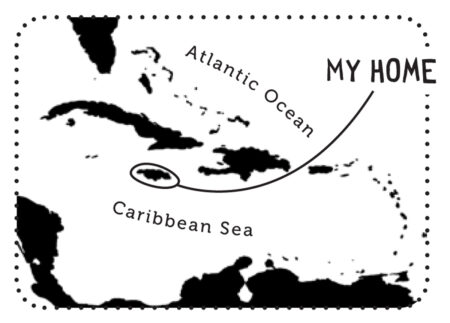 Beautiful white-sand beaches, smiling faces, and a warm and welcoming ray of sunshine kissing your cheeks as you sip on freshly chopped coconuts. This is what most people think about when they hear the name of the Jamaican Blackbird’s (Nesopsar nigerrimus) homeland. However, this endangered endemic prefers to stay 500-2,000m above sea-level in the lush, cool, rainforests of the country’s interior mountains.
Beautiful white-sand beaches, smiling faces, and a warm and welcoming ray of sunshine kissing your cheeks as you sip on freshly chopped coconuts. This is what most people think about when they hear the name of the Jamaican Blackbird’s (Nesopsar nigerrimus) homeland. However, this endangered endemic prefers to stay 500-2,000m above sea-level in the lush, cool, rainforests of the country’s interior mountains.
Its name describes its features perfectly with the exception of its dark-brown iris and slight blue gloss on its all-black plumage. This shiny black icterid (Family Icteridae includes blackbirds, orioles, meadowlarks, troupials, the Bobolink, etc.) boasts a slim, sharply-pointed black bill and a short, slightly forked, rounded tail, and black legs. Juveniles are similar to adults but their plumage has a slightly brown tinge and they lack gloss. Compared with other members of its family, Nesopsar has shorter legs and more curved claws, which are advantageous in arboreal (tree) foraging. The Jamaican Blackbird climbs vertically, like a woodcreeper, pecking into the trunk for crunchy and gooey beetles, snails, and caterpillars.
To locals, Jamaican Blackbirds are affectionately known as the “Wildpine Sergeant” because they can be found silently foraging in bromeliads and moss, or at the base of trees tossing out dead leaves and sticks. The sound of these disturbed leaves and the rain of debris, as they seek out small invertebrates, is often the first thing that attracts the attention of curious and hopeful birdwatchers to its whereabouts.
The Jamaican Blackbird breeds between the months of May and July. Their nests are built in the shape of a cup, well-hidden in the foliage. Though they are never seen in flocks, they may be seen in family groups sometimes after nesting periods. The song is a wheezy, tuneless “zwheeee-zee-zooo-zee-zee-zooo.” The call is a single, squeaky “wheet” repeated every few seconds.
This species is poorly studied and has become increasingly difficult to find over the decades, probably due to a loss of habitat. It is now classified as Endangered. Bauxite mining, commercial tree planting, and coffee plantations have all led to the removal of mature native trees that support the large bromeliads in which it forages.
When you visit the beautiful island of Jamaica make sure to keep an eye out on the winding roads and trails in Cockpit Country, and the Blue and John Crow Mountains National Park, you may just spot a rare Jamaican treasure! And locals, let our government know that the habitat of our endemic Jamaican Blackbird needs to be protected to ensure its survival long into the future. Learn more about this species, including its range, photos, and calls here.
Thanks to Justin Saunders for the text!
Colour in the Jamaican Blackbird
Download our West Indies Endemic Bird colouring page. Use the photos below as your guide, or you can look up pictures of the bird online or in a bird field guide if you have one. Share your coloured-in page with us by posting it online and tagging us @BirdsCaribbean #CEBFfromthenest
Listen to the song of the Jamaican Blackbird
The song of the Jamaican Blackbird is a wheezy “zwheeee-zee-zooo-zee-zee-zooo.”
Puzzle of the Day
Click on the image below to do the puzzle. You can make the puzzle as easy or as hard as you like – for example, 6, 8, or 12 pieces for young children, all the way up to 1,024 pieces for those that are up for a challenge!
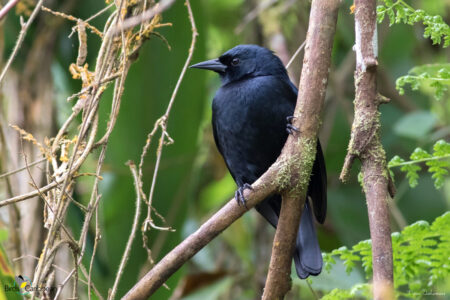
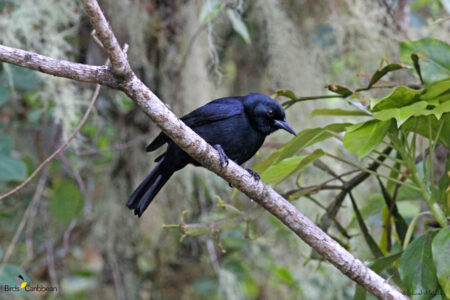
Activity of the Day
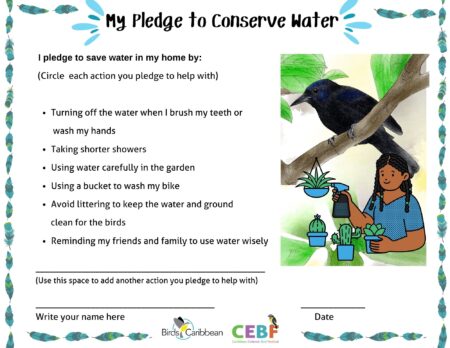 FOR KIDS: We hope that you have been enjoying learning all about our Caribbean endemic birds! Don’t forget that this year our theme is “Water: Sustaining Bird Life”. Some of the birds we have featured so far are endangered and many others are under pressure, often from human activities. This means our special endemic birds and many of the other beautiful birds that live in or visit us in the Caribbean need your help.
FOR KIDS: We hope that you have been enjoying learning all about our Caribbean endemic birds! Don’t forget that this year our theme is “Water: Sustaining Bird Life”. Some of the birds we have featured so far are endangered and many others are under pressure, often from human activities. This means our special endemic birds and many of the other beautiful birds that live in or visit us in the Caribbean need your help.
All birds need water to survive so you can help by carrying out the actions in our “Pledge to Conserve Water.” You can download and print our water pledge here. Then sign your name and get started helping our birds by following some of the simple water-saving actions listed in the pledge. You could also hang or pin it up somewhere at home to remind you to keep saving water and helping birds and wildlife. And don’t forget to share this pledge with your family and friends!
FOR KIDS AND ADULTS: Enjoy the short videos below of a Jamaican Blackbird foraging for tasty insects in the Blue Mountains National Park in 1) lichen and moss along tree branches, and 2) a large bromeliad.
Did you know that in 2020 Shika Shika released their album “A Guide to the Birdsong of Mexico, Central America, & the Caribbean” ? The project was a unique fusion of music and birdsong , the ten-track electronic music album, incorporated the songs and calls of endangered birds. Amongst the calls and songs of endemics from the region you can listen out for the sweet songs of our Caribbean birds- including the Jamaican Blackbird! Find out more below:

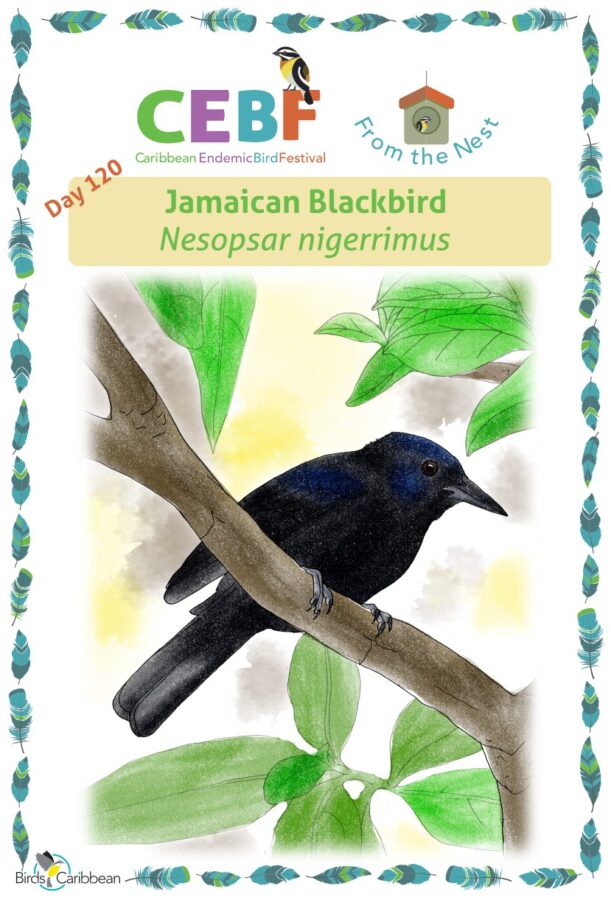
One comment
Comments are closed.